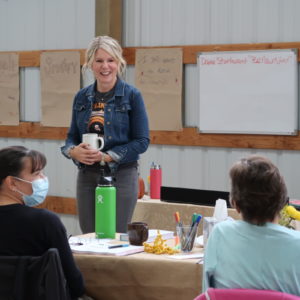
|
Featuring Articles for HEALTH CARE PROVIDERS, EDUCATORS, AND PARENTS
Have a topic idea? Reach out to me at info@doctoramyllc.com with your ideas!
SUBSCRIBE TO THE NEWSLETTER

|

|
|

I know. There’s a lot of information out there regarding burnout and medical providers. As you read it, I’m sure you’re like (read with sarcasm), “No kidding, I’m burned out, thanks for the update.” Have you taken the time to inventory the degree to which you’re experiencing overwhelm? Have you thought about signs of compassion fatigue that you’re experiencing? I think one factor that’s tricky is recognizing when we go from – “yes, I’m really overwhelmed” to “I feel extremely burdened with the lack of work/life balance” to “I can’t do this anymore.” Why is this complicated?
The first reason it’s complicated is because, as healthcare professionals, we’re pretty good at compartmentalizing. We’ve been trained to put off our needs in order to focus on others since the beginning of our training programs. Don’t use the restroom, don’t act tired, don’t ask for a break, don’t eat for periods of time and certainly don’t let ANYONE know you’re uncertain of the next step. Move onto the next case, next patient, next meeting and push the worry, overwhelm, fear, questions and concert aside – you’ve got to move on. But…where does all that stress go?
The second reason it’s complicated is because we’re trained in a model of performance and outcomes. In medicine, training is based on performative outcomes, fee for service, finding answers and fixing problems. There are prescription pads, notes, surgeries, pills, recommendations and solutions. There is NOT slowing down, processing and second guesses. And it can be very isolating. People are looking to you to solve a problem. NOW. But…where are you supposed to collaborate and problem-solve?
The third reason it’s complicated is because it’s really blurry right now. Our worries, fears and concerns – think disease, vaccines, overwhelm, worry for loved ones, overwhelm with kids coming out of distance learning, understaffing, etc. are the same as our patients’ worries, fears, and concerns. So the separation between work, home, and patient presentation feels very blurry and uncertain. It feels like there’s no clear line between difficulties our patients are facing and our own barriers to wellness right now. So…how do we recognize this?
Finally, and this one really hits home for me, we’re trained to be heroes. Selfless, compassionate helpers. Patients, team members, staff, parents, and co-workers are constantly looking to us for confident, refined, definitive answers. We take on the world, solve problems, help others, heal the hurt, find solutions, and shoulder storms of uncertainty. But…what do we do when we’re feeling anxious and uncertain?
Friends, this is what I mean by “Beyond Burnout”. I want you to take an inventory of what’s truly weighing on you and feeling heavy. I often imagine healthcare providers in super-hero capes. But the cape feels heavy, no? It feels smothering at times? And sometimes the burden is too much and quite lonely. There’s no space for uncertainty and validation for what you’re going through which only leads to more overwhelm and feelings of burnout. And if we’re honest, a bit of resentment, angst, and panic can get mixed in there too. That is all normal and expected given what we are going through right now.
I see you. And I want to provide help and direction for where ever you’re at in this honest inventory of overwhelm. I have a few things to help:
See you soon.
With compassion,
Dr. Amy